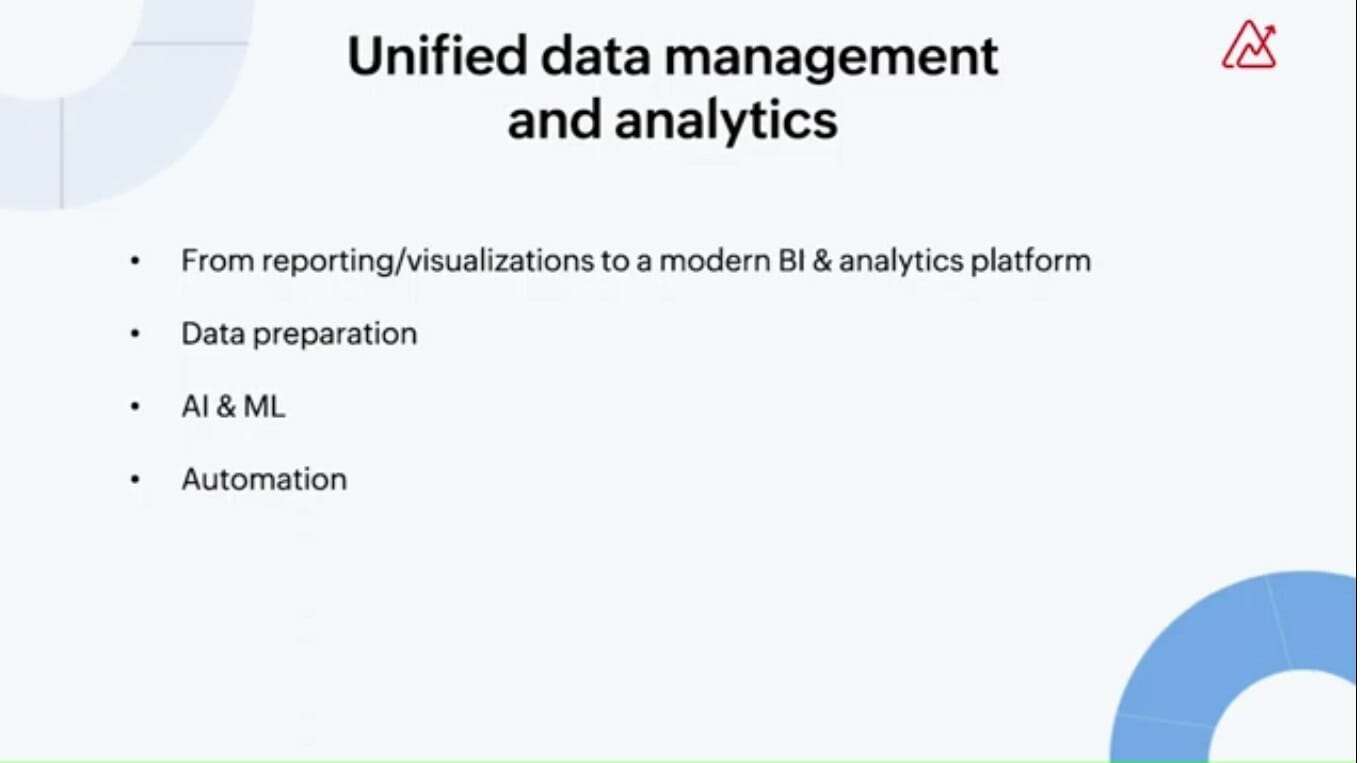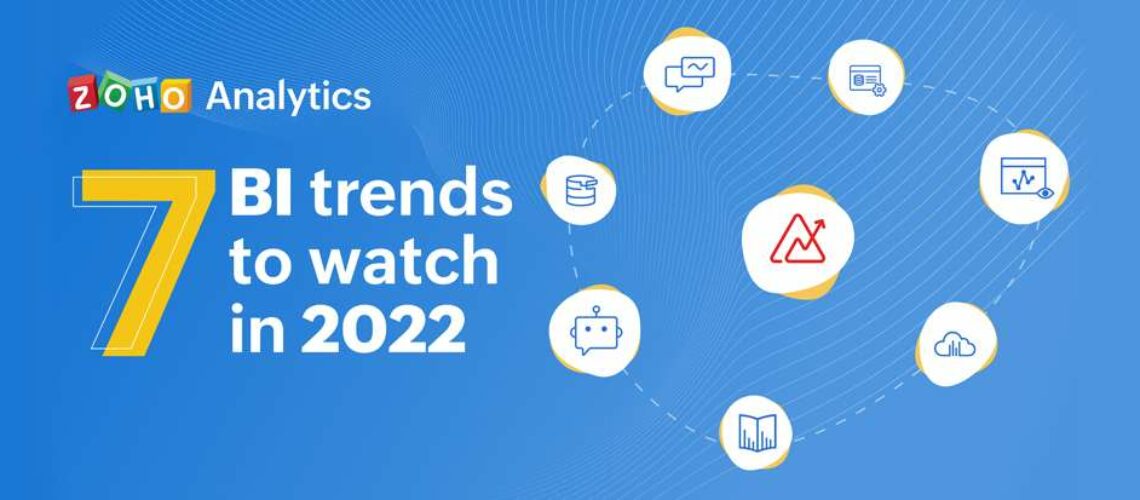Some businesses are still reeling from the impact of the pandemic, while others are growing as expected, with some even outperforming expectations irrespective of the stage in which your business currently finds itself. One of the key enablers helping companies steadily navigate through this crisis is business intelligence.
Here’s our list of the top seven BI trends to help you gear up for 2022.
Cloud Analytics
The mass Exodus digital exodus of 2019 ran through 2020 and 2021 and is here to stay through 2022. In the last couple of years, we witnessed a rapid adoption of business applications, leading to phenomenal volumes of data generated at multiple points. In the last couple of years, companies had a distributed Workforce, which was widely distributed across the globe, and to maintain collaboration and productivity, companies started moving the data to the cloud. To garner actionable insights and timely insights from this data analytics vendors and companies work together to get BI closer to data. And this was made possible with the help of cloud Analytics. Now, this rapid adoption and Cloud analytics is further opening up possibilities in the space of deploying them. So, depending on the budgets, security, complaints hardware, and other factors, analytics, can also be flexibly deployed on private-public hybrid multi, or Community clouds. They can also be delivered in the form of micro Services through containers.
Cloud analytics is the New Black of 2022. Extensive mobile capabilities, powerful and flexible licensing model firm, illegal security, and privacy Frameworks. The emergence of Industry best practices and the ever-growing trust quotient. In the cloud, analytics will drive adoption in 2022.
Unified Data Management and Analytics
Today’s modern BI and analytics platforms have transformed from being merely a reporting or visualization tool into a modern BI self-service, BI and analytics platform and thanks to the ingenious unification of the BI stack. Data integration, preparation management, and insights are becoming a native part of BI workflow in the data preparation layer. With the ingestion of AI and ML Technologies, this layer is completely redefined, and the cell service factor is also getting redefined in the data preparation space. This will act as a major propellant for democratizing data and analytics. The introduction of automation into this layer further simplifies data preparation for business users and data scientists.

Augmented Analytics
We did discuss the rapid adoption of business applications in the last couple of years as a Fallout of this. It’s creating multiple points of consumption for analytics. The traditional way of approaching analytics is getting data into a BI application and then analyzing it and consuming it from the BI application. Given the burgeoning need to analyze or consume insights across these different applications that a business user uses. Companies are now beginning to embed AI and ML capabilities into any business workflow for contextual insights Discovery. At these consumption points, the advancements in NLQ Technologies are leading to more immersive interactions with the BI platform. Business users can just ask questions and get their answers in the form of reports. Finally, what’s gaining steam in augmented analytics is decision intelligence powered by NLG technology. This need not be understood as a technology that replaces human decisions, but these Technologies complement human decisions by giving more firepower to decision-makers. Also, with deep learning models, AI is getting smarter and more scalable.
Unified Business Analytics
We talked about businesses adopting multiple business applications. In that context, BI vendors are also beefing up their capabilities to connect to these natively. This means that platforms are getting more data agnostic. With Native app Integrations and advancements in pre-built domain-specific data models, businesses can get to insights faster. Meaning you don’t have to build any essential reports where our platform can deliver them to you in the form of pre-built Analytics. And with Auto modeling and blending capabilities of data across business applications and data sources, BI vendors are now able to deliver real-time cross-functional insights that provide a 360-degree view of the business.

Data Storytelling
Dashboards are no more a primary source for consuming insights. The ROI and the utility of dashboards are under Fire for modern businesses. What are businesses doing today? They’re looking Beyond primitive capabilities to present data with proper entity and context without bias. How is this need getting addressed? BI vendors are exploring more consumerized insights delivery experiences that humanize data interactions. So it’s essentially about demystifying complex KPIs and presenting data and insights in the way that the users want. Now to give you a classic example, the c-suite in a company may not be looking at those reports and may not be driving those insights that may be relevant for a sales executive. The entire approach to data and insights will be different for the CX and the frontline sales, people, or staff. How do you package and present insights that users can relate to and consume with proper empathy and context? With the ornamentation of AI, this is becoming more exploratory immersive, and Interactive.
Business Activity Monitoring
BI platforms are working closely with companies to help them move out from the zone of reactive analytics and to progress into proactive analytics. How is this getting materialized? Modern BI platforms are engineered to understand the KPIs of interest for business, and these platforms, keep a close watch on them. That’s the reason for business activity monitoring and not just KPI monitoring. Some of the capabilities the modern BI platforms have today to monitor business activity are proactively sensing outliers to detect anomalies, flag critical changes in your KPI, and a lot more. Logging into the BI platform to spot these anomalies or outliers won’t stall the purpose. Now, it’s important to bring these capabilities into the context of your business workflows in delivery mechanisms to help you do that. Modern BI platforms are engineered to work seamlessly with modern applications, where they can deliver these flags as signals in the context of your workflow. As an extension to the traditional BI workflow, some Modern BI applications are built to trigger actions in the context of these insights. With the augmentation of AI and ML capabilities, platforms will be able to intelligently decide the necessary actions to be triggered based on insights as they happen.
Embedded BI
In the last two years, we witnessed an uptake in businesses natively embedding BI into their legacy systems or existing assets for internal consumption. So what propelled this revolution was made possible with the help of composable analytics that works on the principles of low code and no code that helps businesses create user-focused apps from existing assets without investing in your assets. From the market side, BI platforms are also beefing up their API stacks, making them more robust to cut down development Cycles, with more pre-built and reusable components and less hand-coding. With the advancements in infused analytics, platforms will be able to deliver a more natural experience as a part of your parent applications workflow. That will cut down the number of apps used for analyzing data by delivering in context an all-in-one analytics experience inside your existing applications.




